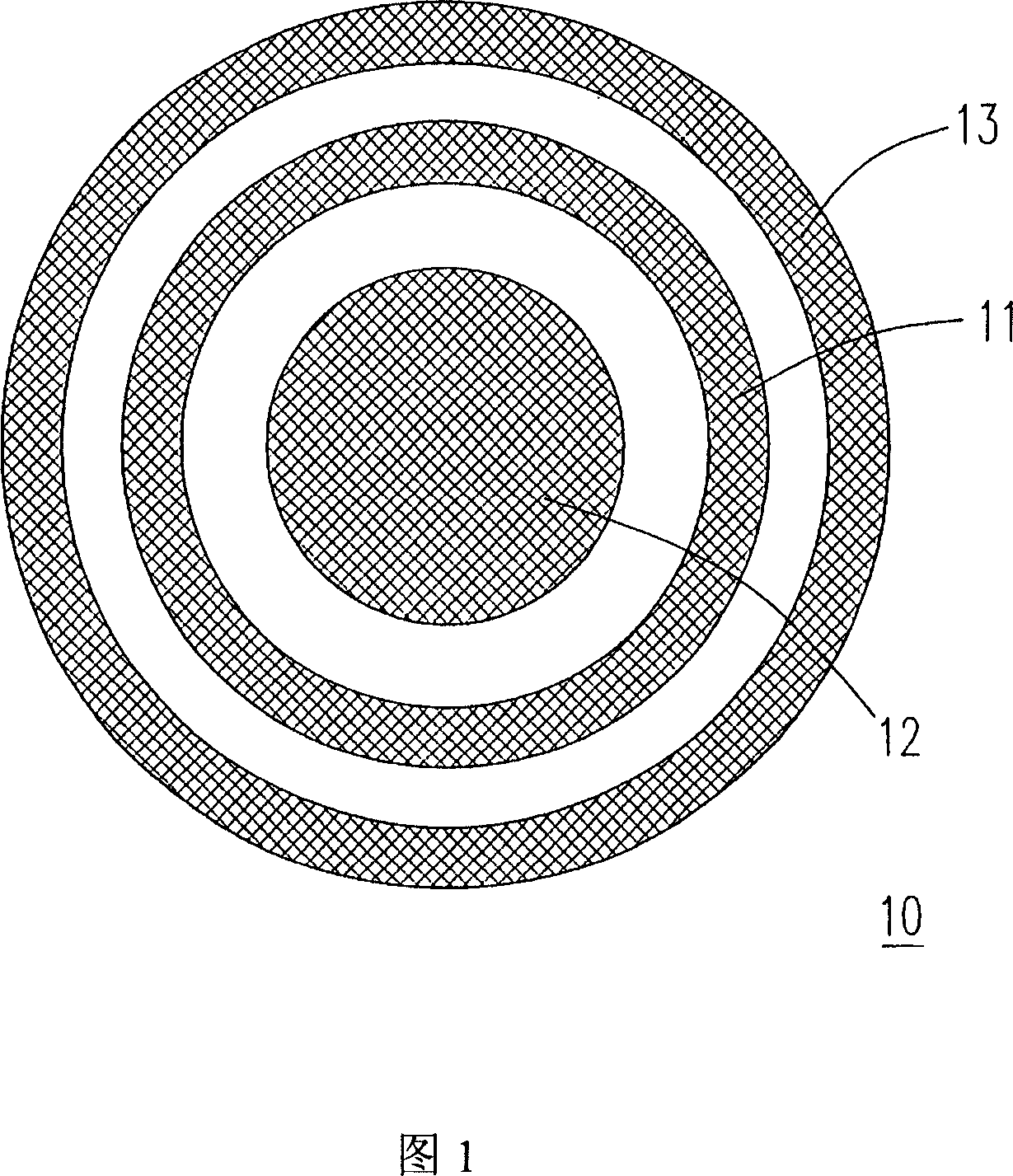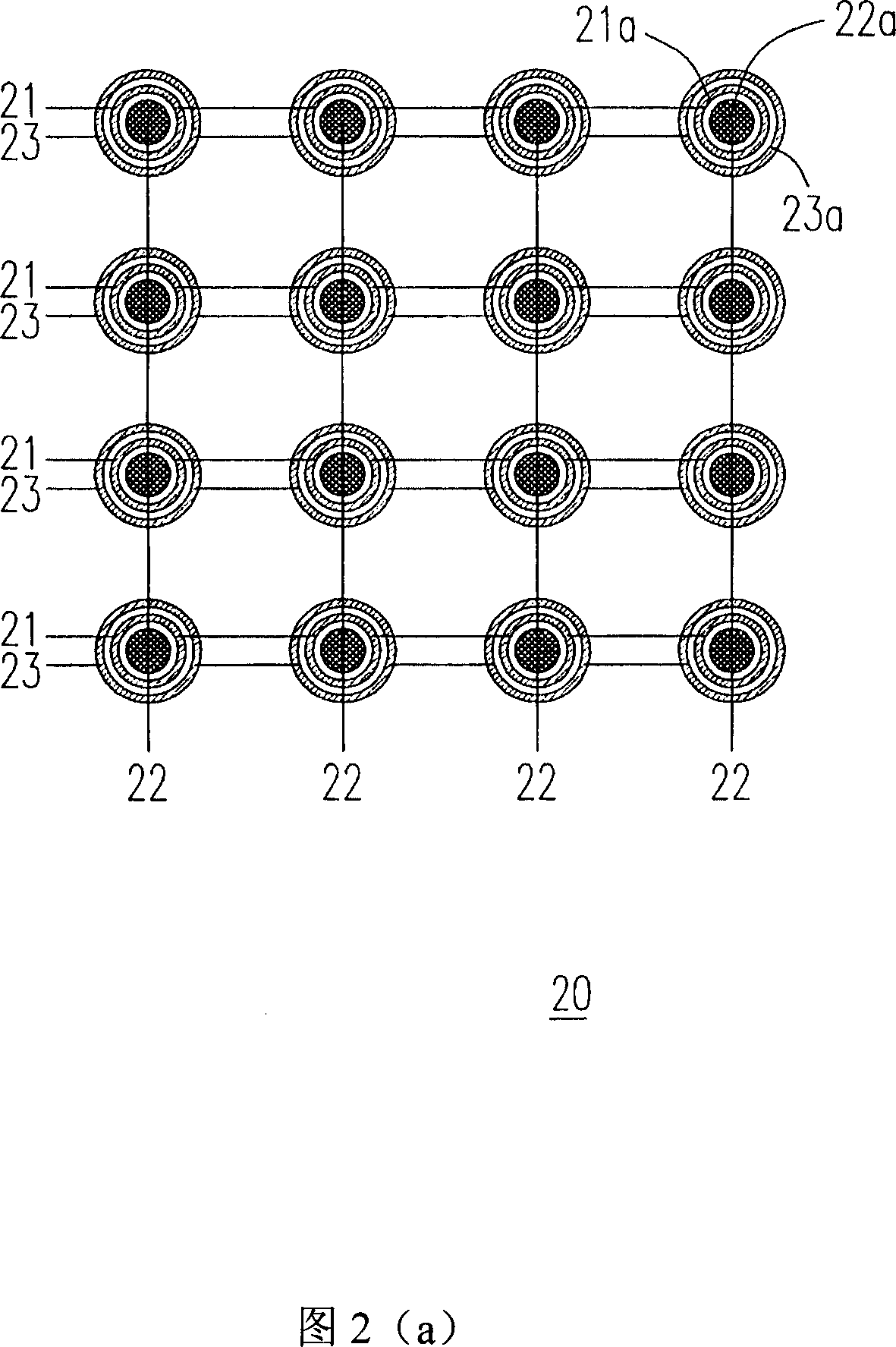Adjacent induction device and its induction method
A technology of sensing device and sensing area, applied in the field of proximity sensing devices, can solve the problems of inability to popularize in large numbers, affecting the use effect, and false touch operation.
- Summary
- Abstract
- Description
- Claims
- Application Information
AI Technical Summary
Problems solved by technology
Method used
Image
Examples
no. 1 approach
[0054] Please refer to FIG. 1 , which is a top view of a first embodiment of a proximity sensing device of the present invention. The proximity sensing device 10 in FIG. 1 includes a driving area 11 , an active area 12 and a restrictive area 13 . The first embodiment is an electric field proximity sensing device, wherein the drive area 11 is used to generate an electric field, and when the drive area 11 generates an electric field, both the sensing area 12 and the limited sensing area 13 will sense the base voltage, when there is no operation, the sensing area 12 and the limited sensing area 13 respectively sense the same voltage. The sensing area 12 is used for sensing operation and generates a first voltage change, and the sensing area 12 can also be regarded as a first sensing area. The limited sensing area 13 is used to sense the operation and generate a second voltage change, and the limited sensing area 13 can also be regarded as a second sensing area.
[0055] In the ...
no. 2 approach
[0066] Please refer to FIG. 2( a ), which is a top view of a second embodiment of the proximity sensing device of the present invention. The proximity sensing device 20 in FIG. 2( a ) includes a plurality of driving regions 21 , a plurality of sensing regions 22 and a plurality of limiting sensing regions 23 . The second embodiment is an electric field proximity sensing device, wherein the plurality of driving regions 21 are used to generate an electric field. When the plurality of driving regions 21 generate an electric field, the plurality of sensing regions 22 and the plurality of limiting sensing regions 23 will induce a base voltage, and when there is no operation, the plurality of sensing regions 22 and the plurality of sensing regions 22 will Each of the restricted sensing regions 23 respectively senses the same voltage. The plurality of sensing regions 22 are used for sensing operation and generate a plurality of first voltage changes, and the plurality of sensing reg...
no. 3 approach
[0079] Please refer to FIG. 3 , which is a top view of a third embodiment of the proximity sensing device of the present invention. The proximity sensing device 30 in FIG. 3 includes a plurality of driving regions 31 , a sensing region 32 and a plurality of limiting sensing regions 33 . The third embodiment is an electric field proximity sensing device, wherein the plurality of driving regions 31 are used to generate an electric field. When the plurality of driving regions 31 generate an electric field, the sensing region 32 and the plurality of restricted sensing regions 33 will induce a basic voltage. When there is no operation, the sensing region 32 and the plurality of restricted sensing regions 33 respectively sense the same voltage magnitude. The sensing area 32 is used for sensing operation and generates a first voltage change, and the sensing area 32 can also be regarded as a first sensing area. The plurality of restricted sensing regions 33 are used for sensing oper...
PUM
 Login to View More
Login to View More Abstract
Description
Claims
Application Information
 Login to View More
Login to View More - R&D Engineer
- R&D Manager
- IP Professional
- Industry Leading Data Capabilities
- Powerful AI technology
- Patent DNA Extraction
Browse by: Latest US Patents, China's latest patents, Technical Efficacy Thesaurus, Application Domain, Technology Topic, Popular Technical Reports.
© 2024 PatSnap. All rights reserved.Legal|Privacy policy|Modern Slavery Act Transparency Statement|Sitemap|About US| Contact US: help@patsnap.com










